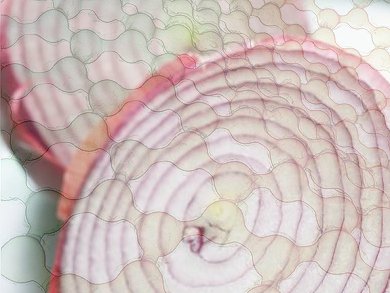Engineering the current wonder material graphene into useful structures is one aim of materials science research. James Tour, Rice University, Houston, TX, USA, and colleagues there and at Nanyang Technological University, Singapore, have found a way to control the growth of graphene to construct nanoscopic entities resembling hexagonal onion rings of carbon grown on copper. The team’s observation and calculations suggest that ring formation of the three-dimensional (3D) graphene structures arises as hydrogenation-induced edge nucleation occurs and three-dimensional growth of a new graphene layer on the edge and under the previous one takes place.
Graphene, the all-carbon material that resembles scaled-down hexagon-based chickenwire fencing, offers much for technologists in the form of unique optical, electrical, and physical properties. Taming its growth and controling the formation of structures on metal and semiconductor substrates will be key to investigating these properties and constructing nanoscopic devices to exploit the material.
- Hexagonal Graphene Onion Rings,
Zheng Yan, Yuanyue Liu, Jian Lin, Zhiwei Peng, Gunuk Wang, Elvira Pembroke, Haiqing Zhou, Changsheng Xiang, Abdul-Rahman O. Raji, Errol L. G. Samuel, Ting Yu, Boris I. Yakobson, James M. Tour,
J. Am. Chem. Soc. 2013.
DOI: 10.1021/ja403915m




